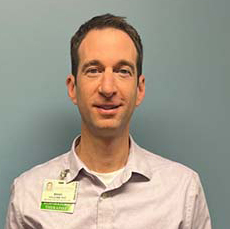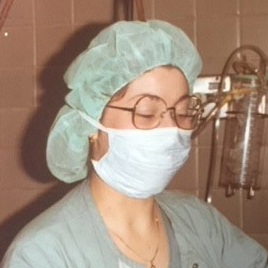Chemical management in the OR: Nitrous mitigation project
University of Vermont Medical Center, United States
Case study summary
In an effort to seek data on the amount of nitrous oxide that was used by providers in 2021, the University of Vermont Medical Center (UVMMC) EPIC Optime analysts reviewed the hospital’s anesthesia providers’ records to determine the amount of gas administered versus the amount of gas the amount of gas purchased. (EPIC is the facility’s electronic health record, and Optime is the application providers in the perioperative department use for all of their documentation.)
Demographic information
- City: Burlington
- State/province/region: Vermont
- Country: United States
- Type of institution: Hospital
- Number of full-time staff: 6,621
- Number of part-time staff: 1,120
- Number of beds: 620 (licensed)
- Patient population served annually: More than 1 million people in Vermont and Northern New York
- 168,000 patients served annually (total of inpatient and outpatient):
- Geographic area served: Vermont, Northern New York, Eastern New Hampshire
- Health equity concerns experienced by your population:
- Language access, recognition, and respect of the multicultural population
- Access to reliable transportation in the rural community
- The need for affordable housing and well-paying jobs
The issue
Nitrous oxide (nitrous or N ₂O) is a colorless gas used clinically as an adjunct to general anesthesia for sedation and analgesia. Also known as laughing gas, it is the most impactful greenhouse gas after methane and carbon dioxide and is the biggest human-related threat to the ozone layer. Many hospitals use nitrous, UVMMC included. At the CleanMed conference in Kansas City in 2022, UVMMC staff attended a presentation by Brian Chesebro, MD, medical director for environmental stewardship at Providence Health. Dr. Chesebro’s presentation focused on their study of nitrous waste and mitigation in the perioperative department. The UVMMC team was struck by Providence’s project, which shared compelling findings indicating nitrous was being vented – and not utilized for clinical care – in vast amounts.
While gathering data for the annual Practice Greenhealth application for CY2021, staff noted that UVMMC purchased 2,583 pounds (approximately 600,000 liters) of nitrous oxide, which seemed like a large amount.. After seeing Providence Health’s presentation on their project to identify, track, and mitigate nitrous leaks, UVMMC organized anesthesia providers, leadership, and staff to perform the same assessment at UVMMC. Based on this data, the team assumed a large amount of nitrous at their facility was being vented.
Hospital goal
UVMMC’s goal was simple: to reduce greenhouse gas emissions to aid in their commitment to achieve net zero climate emissions and join the United Nations Framework Convention on Climate Change’s Race to Zero Campaign.

Did you know that the impact of one pound of nitrous oxide on warming the atmosphere is almost 300 times that of one pound of carbon dioxide? And we think that a large percentage of our piped-in nitrous oxide to the Operating Room is actually leaked into the atmosphere and never used. There’s a better way to meet this need for our patients. It’s not very often that we get an opportunity to reduce our carbon footprint and get cost savings in the process. I’m optimistic!
Sustainability strategy implemented
Seeking raw data, UVMMC’s EPIC Optime analysts reviewed anesthesia providers’ use of N ₂O in 2021. The data revealed that only 73,000 liters of N ₂O were used, yet 600,000 liters were purchased. The UVMMC team assumed that the discrepancy must be due to major leaks in the nitrous piping infrastructure. Even with a large margin of error, the discrepancy would indicate a massive waste, even accounting for the ¼ tank of N ₂O that is typically disposed of once the pressure starts to drop and the tank is swapped.
Implementation process
Once the raw data was gathered, the team was assembled. Anesthesia providers who were committed to sustainable practice came together, including the chair of anesthesiology, facilities leadership, the manager of respiratory care, sustainability council members, perioperative biomedical engineers, and the director of perioperative services. These leaders shared the data and discussed ways to change the delivery of N ₂O to the anesthesia machines. They proposed that N ₂O would be delivered to the anesthesia machines via e-cylinders mounted on the machines, rather than the standard H-size tanks that were historically used. At UVMMC, the H tanks were stored in the central plant, which is thousands of feet away from the operating rooms. Stakeholders contacted the vendor, AirGas, to see if they would be able and willing to support the change from the H tank to smaller e-cyclinders, which the vendor accommodated. With 45 e-cyclinders in place, the facilities and biomed staff shut off the manifolds from the H tanks to prevent or silence alarms during the transition. Staff decided to keep the manifold in place and turn on as needed through the project’s six-month trial period. Biomed staff ensured the anesthesia machines were properly fitted for the new tanks, and the hoses to the H tanks were removed by Feb.22, 2023. The anesthesia team presented this project at grand rounds, and all providers gave their support. With an initial March 1 go-live date, facilities leadership confirmed functionality of central N ₂O manifold and alarm silence/disable, and UVMMC’s vendor AirGas confirmed the distribution of four to five e-size tanks per month, promising the ability to provide more as needed. To further conserve N ₂O, anesthesia technicians confirmed they would double check that all the e-size N ₂O tanks on anesthesia machines are shut off at the end of each day.
Tracking progress
The start date was initially delayed, as some of the N ₂O e-cylinders were expired. Special manifolds were also needed to fit the smaller cylinders onto the anesthesia machines. The UVMMC team set a new go-live date of Sept.6, 2023.
The team plans to re-evaluate at three-month intervals after conversion. They aim to collect data about the quantity of N ₂O delivered to patients compared to the baseline of nitrous purchased.
UVMMC uses the following equation to estimate their environmental impact:
"Estimated release to the environment + total of H-size cylinders purged from 500 psi to 0 prior to refill"
The team also plans to evaluate if they successfully eliminated use of the manifold H-sized cylinders and piped N ₂O. They will then estimate the total reduction in nitrous released to the environment based on calculations and strategy presented above. Finally, they plan to estimate cost reduction for the purchased volume of N ₂O in smaller tanks, which are better monitored due to being turned on and off by anesthesia providers and techs.

My environmental sustainability path started during my work as a supply agent for my hospital’s anesthesia department. I was comparing the financial cost of our disposables: from the initial purchase price to the cost of supplies that get opened but not used. My colleague, Monique Citro, educated me about the loss of nitrous oxide from our central tanks and supply lines. I was fortunate to receive ample support from the hospital, the providers, and the engineers. We all worked together to align the final parts and in less than a year were able to shut down the central nitrous oxide tanks. Thank you, Monique! I see more environmental projects in our future!
Challenges and lessons learned
UVMMC reports that once they had all the team members assembled, the project came together smoothly. The team met weekly, and each team member was assigned tasks, from data gathering to hardware procurement. They found Providence’s work in this realm to be incredibly helpful regarding project planning. UVMMC cites the biggest challenge as finding the right people on the EPIC team in information services to run the correct reports that showed N ₂Ousage from providers in anesthesia.Once these team members understood the specific data sought, the report was generated quickly. They note that the biggest challenge for hospitals may be finding data that shows nitrous usage for surgeries or procedures within the various electronic health records (or paper records for some) and gathering the data.
Next steps
Once UVMMC makes the full shift to the e-cylinders on the anesthesia machines from the H tanks, they anticipate revisiting EPIC reporting and reviewing the amount of nitrous being used by providers, and measuring the number of e-cylinder tanks used. They anticipate this information can also be used for anesthesia provider education across their health system and hopefully eventually serve as a model for implementing similar programming across the system’s full network of hospitals.